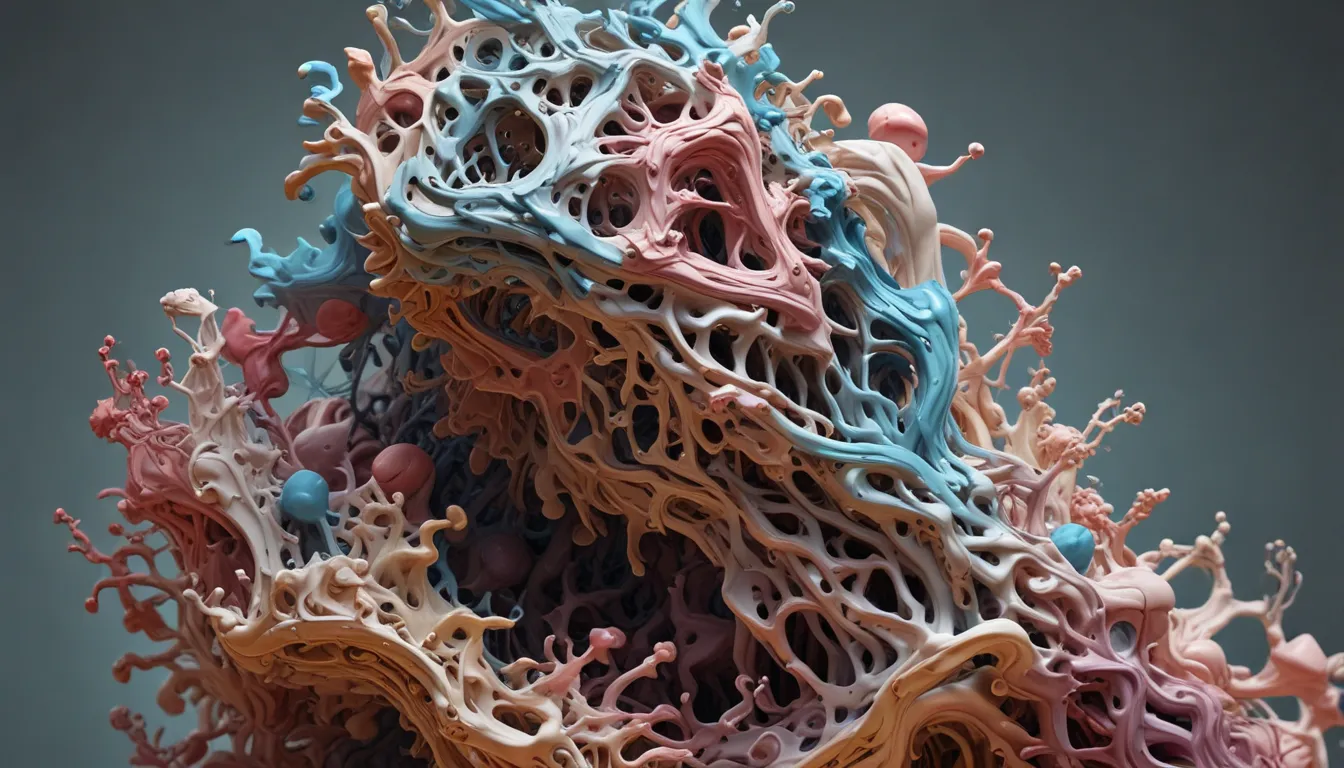A Note About Images: The images used in our articles are for illustration purposes only and may not exactly match the content. They are meant to engage readers, but the text should be relied upon for accurate information.
In the intricate world of chemistry, secondary structure holds a significant place, offering insights into the folding patterns of proteins, DNA, and RNA. These patterns play crucial roles in the functionality of biomolecules, shaping the molecular universe in fascinating ways. Let’s embark on a journey to uncover facts about secondary structure, from the discovery of alpha helices and beta sheets to the profound influence they have on protein stability and function.
Unraveling the Mysteries of Protein Folding
Proteins, the workhorses of the cellular world, boast cool shapes dictated by their secondary structures. The Alpha Helix 1 and Beta Sheet act as the superheroes of protein folding, determining stability and function like a protein’s secret identity. Factors like amino acid sequence and environmental conditions influence how proteins fold, akin to a puzzle where every piece finds its special spot.
The Alpha Helix and Beta Sheet: Pillars of Protein Structure
The two main types of secondary structures in proteins, the Alpha Helix, and Beta Sheet, define the local folding patterns of amino acid chains. The Alpha Helix spirals in a right-handed coil, while the Beta Sheet consists of multiple strands running side by side, contributing to the protein’s overall shape and function.
Pioneering Discoveries in Secondary Structure
In 1951, Linus Pauling and Robert Corey unveiled the Alpha Helix, pinpointing the regular hydrogen bonding pattern responsible for its coiled structure. This groundbreaking discovery laid the foundation for understanding the intricate world of protein folding.
Exploring the Diversity of Beta Sheets
Beta Sheets come in two varieties: parallel and antiparallel. In parallel Beta Sheets, adjacent strands run in the same direction, while in antiparallel Beta Sheets, adjacent strands run in opposite directions, creating a sturdy, stable structure.
Navigating the Ramachandran Plot
The Ramachandran Plot serves as a graphical representation of the allowed conformations of amino acids within a protein’s secondary structure. By predicting the rotation angles of phi (?) and psi (?), this tool sheds light on the protein’s overall folding pattern.
Unveiling Structural Motifs: Beta Turns and Protein Domains
Beta Turns act as structural bridges that link strands of a Beta Sheet, facilitating the formation of a compact protein structure. Moreover, protein domains often exhibit distinct secondary structures, defining their boundaries and functionality within the larger protein framework.
Delving into Local Motifs and Protein Stability
Local motifs like the helix-turn-helix and the Greek key showcase specific arrangements of secondary structure elements, creating recognizable patterns within proteins. These motifs are essential for stabilizing the protein structure through hydrogen bonding between amino acid residues.
Factors Influencing Secondary Structure Formation
The formation of secondary structures is influenced by various factors, including amino acid sequence and environmental conditions like temperature and pH. Different amino acids exhibit distinct propensities for adopting specific secondary structure elements, impacting the protein’s overall folding pattern.
Harnessing Resources for Protein Structure Study
The Protein Data Bank (PDB) serves as a valuable resource for studying protein structures and secondary elements. With a vast collection of experimentally determined protein structures, the PDB provides insights into the diverse world of proteins across different organisms.
Impacts of Misfolded Proteins on Health
Certain diseases and mutations can disrupt secondary structures, leading to protein misfolding that disrupts cellular functions. This misfolding process can contribute to conditions like Alzheimer’s, Parkinson’s, and prion diseases, highlighting the critical role of secondary structure in health and disease.
Unveiling Protein Structural Secrets with Circular Dichroism
The Circular Dichroism (CD) technique offers valuable insights into the presence and stability of secondary structures in proteins. By measuring the differential absorption of circularly polarized light, CD provides critical information about protein structural properties.
Predicting Secondary Structure with Computational Tools
Computational algorithms based on statistical analysis and machine learning enable the prediction of protein secondary structures. By analyzing protein sequences and comparing them to known structures, these methods offer valuable insights into the most likely secondary structure elements.
Dynamic Nature of Secondary Structures
Secondary structures exhibit dynamic behavior, undergoing conformational changes in response to ligand binding or enzymatic reactions. These changes are essential for proper protein function, influencing interactions with other molecules and biological processes.
Influential Role of Thermodynamics and Kinetics
The formation of secondary structures is a dynamic process influenced by thermodynamics and kinetics. Factors like temperature, pressure, and the presence of other molecules play pivotal roles in determining the stability and folding rates of proteins.
Unique Properties of Amino Acid Residues
Specific amino acid residues, known as helix-breakers or helix-promoters, can impact the formation of secondary structures. These residues possess unique properties that either facilitate or hinder the formation of helices or sheets within the protein structure.
Exploring Length and Complexity of Secondary Structures
Secondary structures can vary in length, with Alpha Helices typically spanning 10 to 45 amino acids and Beta Sheets ranging from 4 to 22 amino acids. The length and arrangement of secondary structure elements contribute to the overall complexity and functionality of proteins.
Embracing the Beauty of Secondary Structure in Proteins
These 18 fascinating facts illuminate the intricate details and significance of secondary structure in protein biology. Understanding how proteins fold and adopt specific shapes is crucial for unraveling their biological functions and developing therapeutic interventions. Embark on a journey into the captivating world of secondary structure, exploring the complexities that underlie the functioning of proteins.
Conclusion
Secondary structure stands as a fundamental concept in chemistry, offering profound insights into the properties and behaviors of biomolecules. It plays a pivotal role in protein folding, DNA replication, RNA structure, and enzyme catalysis, shaping the intricate dance of life’s building blocks. By unraveling the mysteries of secondary structures, scientists pave the way for groundbreaking research and remarkable discoveries in the realm of life sciences.
FAQs
What is the importance of secondary structure in biology?
Secondary structure is crucial in biology as it determines the stability, flexibility, and functionality of biomolecules, impacting protein folding, DNA replication, RNA structure, and enzyme catalysis.
Can secondary structure prediction be accurate?
Recent advancements in secondary structure prediction methods have enhanced their accuracy, providing reliable predictions for many proteins. However, accuracy may vary based on protein complexity, size, and sequence information availability.
How does secondary structure influence protein function?
The specific arrangement of secondary structures within a protein plays a critical role in determining its function, including interactions with other molecules, stability, conformational changes, and binding affinity.






